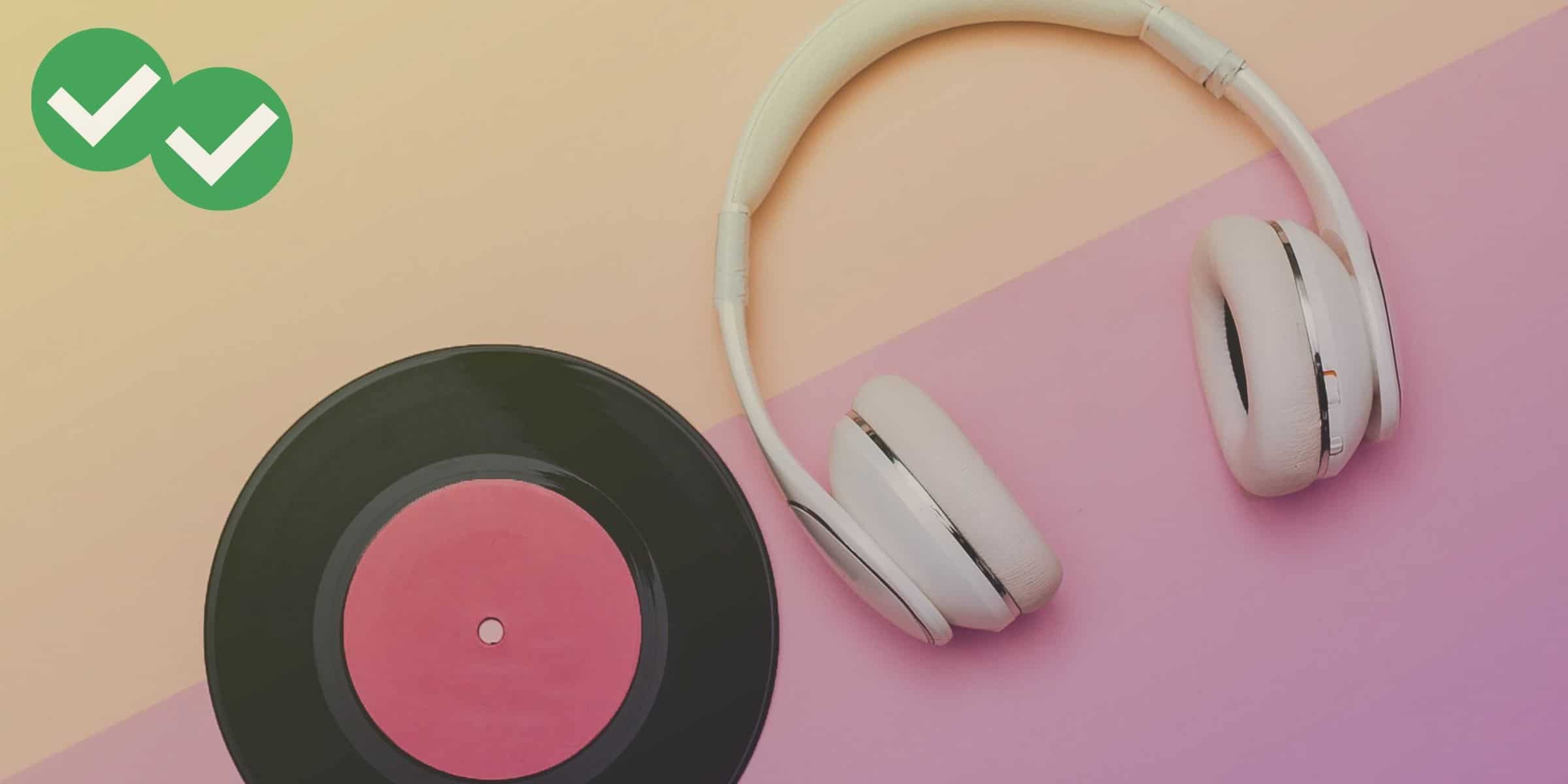
Students often ask me “How can I practice TOEFL Listening?” The good news is that one of the best sources of TOEFL Listening practice is free– you can turn to the Internet for all Listening section practice. Of course, the Internet’s a big place, and it can be hard to sort the good practice from the bad.
In this article, I’ve rounded up Magoosh’s best free online TOEFL Listening practice, as well as some additional recommended practice from ETS, the official makers of the TOEFL. As you go through the practice materials below, remember to take good notes. “How do I take good notes on TOEFL Listening?” you ask? Kate Hardin has you covered with her excellent TOEFL note-taking tips.
Click the links below to jump to different practice resources on this page:
- Free Full-Length TOEFL Listening Practice Test
- TOEFL Listening Practice Questions
- TOEFL Listening Practice by Levels
- Free TOEFL Listening Practice Resources
- Paid (but affordable) TOEFL Listening Resources
- Final Thoughts
Free Full-Length TOEFL Listening Practice Test
We’ll start with an especially good free online practice resource: a full-length TOEFL Listening section. This TOEFL listening practice contains one extra lecture in there, as it reflects the TOEFL before the 2019 changes that shortened the Listening section. So you get some bonus practice! Play the video below to hear all the audio tracks and answer all the questions. Once you’re done, you can check the answer key to see how you did.
TOEFL Listening Practice Questions
Next up, we have an additional lecture and question set. The lecture and the questions come from Magoosh TOEFL. For more practice sets, you can go to the Magoosh TOEFL homepage to sign up for a free one week trial or a full subscription.
INSTRUCTIONS: Listen to the lecture first by clicking the play button, then answer the questions below.
Question 1
What is the main topic of the lecture?
- The technical definition of EMDR
- Differences between different types of therapy
- Various non-traditional treatments for trauma
- The value and usefulness of EMDR treatment
Question 2
According to the professor, what does “processing” mean?
- Explaining the complicated way that EMDR works
- Mentally revisiting a traumatic event
- Understanding an experience via a healthy state of mind
- Talking about a painful experience through EMDR
Question 3
What is the speaker’s attitude toward EMDR?
- She believes it is a unique form of therapy with a proven track record and promising future.
- She thinks it will require time before EMDR’s benefits can be fully understood by psychologists.
- She is unsure of whether or not the results achieved by the method are long-term.
- She believes it will one day be considered the preferred form of treatment for most victims of trauma.
Question 4
The professor describes various features of EMDR compared to other forms of therapy. For each of the following, indicate whether it is a feature of EMDR or of another form of therapy.
For each item, check the appropriate box.
| EMDR | Other Therapy | |
|---|---|---|
| Focuses more on the mental state of patients than on bodily responses | ||
| May be slow in cases of multiple levels of trauma | ||
| Involves moving the eyes back and forth while looking at a beam of light |
Question 5
Listen again to part of the lecture. Then answer the question.
- Traumatic experiences feel like they take a long time to reach completion.
- Traumatic experiences can haunt the memory and never leave a person’s mind.
- Traumatic experiences sometimes occur in repetitious patterns in people’s lives.
- Traumatic experiences can seem more debilitating than they really are.
Question 6
Why does the professor say this?
- To caution against hurrying through treatment to obtain fast results
- To clarify why EMDR is a time-limited treatment approach
- To suggest that other forms of therapy are slower and less effective
- To warn her students against using EMDR with patients whom they do not know well
Answers
Watch our explanation videos for the answers
TOEFL Listening Practice by Levels
This next resource is especially useful if you want to improve your TOEFL Listening speed. In these recordings, you’ll hear the same lecture at four different difficulty levels. The first recording is the easiest, with slow speech and no verbal pauses. The recordings get harder from there. The most advanced recording is similar to a real lecture at an American university.
The source for this series of recordings is the TOEFL Listening lecture from the TOEFL Quick Prep, Volume 1 PDF. You can see a transcript of the original lecture on pages 13-15 of the PDF, followed by a full question set for the lecture. (TOEFL Quick Prep was one of the official free TOEFL resources. It’s outdated because it reflects the old version of the TOEFL, but you can still find all the Quick Prep questions on the Internet Archive website.)
The wording remains the same in each track below, so you’ll get real TOEFL wording and vocabulary no matter which track you listen to.
A Description of the Four Levels of TOEFL Listening Lectures
The beginner-level track is the slowest, so slow that it won’t really sound natural. The low intermediate track is slow, but not completely unnatural. The pace of speech is similar to that of an English-speaking news announcer. The high intermediate track is completely TOEFL-like. Practice a full question set for the lecture, complete with audio. The advanced-level track is not strictly needed for TOEFL listening practice. This track, which is the most difficult, has the pace and tone of a a real college lecture, the kind you’ll hear once you pass the TOEFL and get accepted into school.
- Beginner Level
Click here to open and play the beginner Listening track. - Low Intermediate Level
Click here to open and play low intermediate Listening track. - High Intermediate Level (like the TOEFL)
Click here to open and play the high intermediate Listening track. - Advanced Level
Click here here to open and play the advanced Listening track.
How to Use the TOEFL Listening Tracks
For the best TOEFL Listening practice, take the following steps:
- Listen to the high-intermediate track. If you can understand this track perfectly, great! You’re ready to move on from TOEFL listening practice to TOEFL vocabulary practice. (Or you could move straight to optional step 6.)
- If you had trouble understanding the high-intermediate track, listen to the low-intermediate track. Can you figure out which words you missed, now that the speech is slower?
- If there are still some words you can’t hear clearly, listen to the beginner-level track.
- If even the beginner-level track has words you’re not sure about, check the transcript for this lecture (pages 13-15 of TOEFL Quick Prep Volume 1). Is there any vocabulary you didn’t recognize as you listened?
- Now, listen to the high intermediate track again. You may find you understand it much better. If you’re able to recognize a lot of stuff you missed the first time, make note of the listening mistakes you made. This can help you know which listening skills you need to improve.
- Optional step: Listen to the advanced track. If you can master listening at that speed, you’re more than ready for the TOEFL, and also ready to take on regular English lectures and conversations in your future studies.
- Now it’s time to self-assess. If you had to listen to the beginner or low intermediate tracks to fully understand what you heard, then you need to really improve your listening skills before test day. If there are a lot of words in the lecture that you still don’t feel confident with, you may need to build up your vocabulary as you continue to practice listening.
Free TOEFL Listening Practice Resources
I hope you’ve found the full TOEFL Listening practice above to be useful. Last, but certainly not least, let’s look at some additional TOEFL Listening prep you can use. Click the links below for excellent practice that will help you get a top Listening score on test day.
Free Magoosh Listening Resources
- TOEFL Listening Practice Set One full lecture with 6 questions.
- Magoosh’s TOEFL Listening Practice Test with Answers
PDF A downloadable, printable TOEFL Listening PDF, with one lecture and one conversation, each with its own question set. Links to audio for the lecture and conversation are embedded in the PDF. - Magoosh TOEFL Listening Question Types A guide to the seven question types for TOEFL Listening. This guide includes free audio clips and free sample questions of each type.
- TOEFL Listening Quiz: English Question Words This quiz, complete with audio tracks, is designed to help you understand the similar-sounding but very important English question words.
- Free Magoosh TOEFL Practice Test A full mock test of the TOEFL iBT, including a full TOEFL Listening section. Comes with a full answer key and answer explanations, as well as customized study recommendations.
- Magoosh TOEFL Free Trial Try our premium TOEFL prep service, with our video lessons and practice questions, free of charge. No payment info required!
Free ETS TOEFL Listening Materials
- TOEFL Quick Prep. TOEFL Quick Prep is outdated, but this TOEFL Listening practice download is still available through the Internet Archive. The practice sets reflect the old pre-2019 version of the TOEFL, but in the case of TOEFL Listening, you’ll still get practice similar to what you’d see on test day. Although the first two volumes of Quick Prep have audio-only for Listening, Magoosh has made unofficial audio for the lectures in the first volume and second volume.
- Official TOEFL Listening Practice Sets These PDFs from the ETS web site have a generous number of lecture and conversation quesiton sets. Unfortunately, there is no audio, only transcripts and questions.
- TOEFL Listening Videos This video tour of the TOEFL Listening section includes a number of partial samples of Listening audio, accompanied by related questions.
- Free official TOEFL Practice Test This exam is just like the real one, except for the lack of an onscreen timer. This test, of course, includes a full TOEFL Listening section.
Paid (but Affordable) TOEFL Listening Resources
- Magoosh TOEFL Over 400 practice questions and over 400 video lessons, including tons of prep for TOEFL Listening.
- Official TOEFL iBT Tests, Volume One Five full-length TOEFL practice tests, with all of the questions taken from real TOEFL exams. Unfortunately, the onscreen timer for Listening works a little differently than it would on the real test. Still a fantastic resource for Listening practice.
- Official TOEFL iBT Tests, Volume Two Five more full-length authentic TOEFL practice tests, again with a slightly inauthentic onscreen timer for Listening.
- The Official Guide to the TOEFL Four full-length practice tests (again with the inauthentic Listening timer!), and a full chapter on the TOEFL Listening section with tutorials, advice, and additional practice sets.
A Final Thought on TOEFL Listening Practice Materials
While practice materials that imitate that real exam are quite valuable, allow me to let you in on another important fact: practice that builds general English listening skills is valuable too. There’s more to practice than just TOEFL Listening section audio files! So make sure you get in as much English listening practice as you can. Tune into a good English-language YouTube channel (or Vimeo, or Daily Motion). Listen to some English music sung by native speakers. Watch some English language TV or movies. These are great– and fun– resources to boost your listening skills for the TOEFL.






